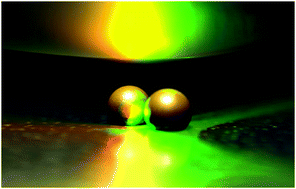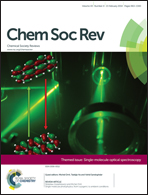Enhanced single-molecule spectroscopy in highly confined optical fields: from λ/2-Fabry–Pérot resonators to plasmonic nano-antennas
Abstract
While single-molecule fluorescence from emitters with high quantum efficiencies such as organic dye molecules can easily be detected by modern apparatus, many less efficient emission processes such as Raman scattering and metal luminescence require dramatic enhancement to exceed the single-particle detection limit. This enhancement can be achieved using resonant optical systems such as plasmonic particles or nanoantennas, the study of which has led to substantial progress in understanding the interaction of quantum emitters with their electromagnetic environment. This review is focused on the advances in measurement techniques and potential applications enabled by a deeper understanding of fundamental optical interaction processes occurring between single quantum systems on the nanoscale. While the affected phenomena are numerous, including molecular fluorescence and also exciton luminescence and Raman scattering, the interaction itself can often be described from a unified point of view. Starting from a single underlying model, this work elucidates the dramatic enhancement potential of plasmonic tips and nanoparticles and also the more deterministic influence of a Fabry–Pérot microresonator. With the extensive knowledge of the radiative behavior of a quantum system, insight can be gained into nonradiative factors as well, such as energy transfer phenomena or spatial and chemical configurations in single molecules.

- This article is part of the themed collection: Single-molecule optical spectroscopy

 Please wait while we load your content...
Please wait while we load your content...